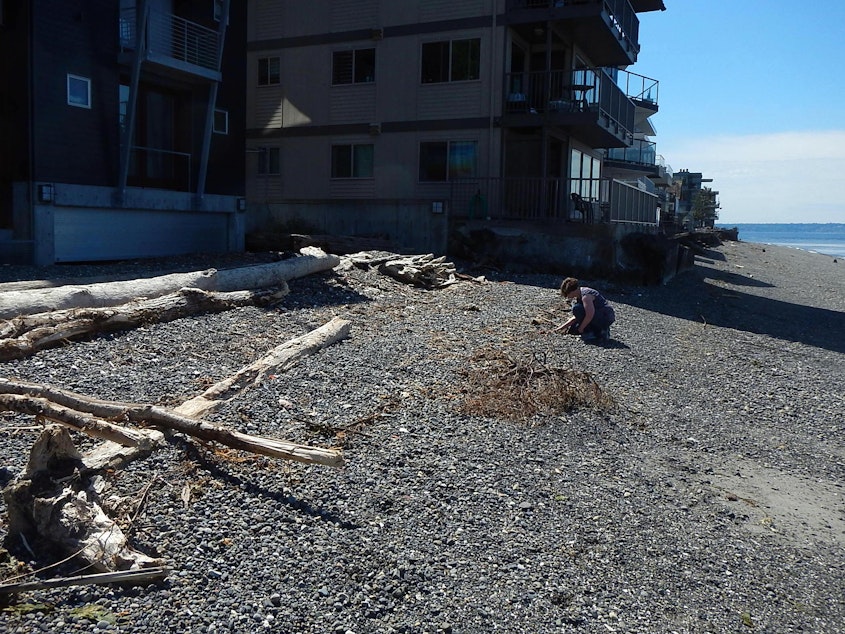Puget Sound suffers as homeowners wall off natural shoreline

In Seattle's King County, property owners have walled off most of the shoreline with concrete bulkheads and other heavy infrastructure.
Along Hood Canal and other rural parts of the sound, the owners of coveted waterfront homes keep building more walls to keep their properties from eroding.
These walls are going up around Puget Sound, and the sound is paying for it.
A new study from the University of Washington suggests the practice, known as shoreline armoring, is more harmful to Puget Sound than previously thought.
Studies by the Washington Department of Fish and Wildlife show that single-family homeowners have done 68 percent of the armoring around Puget Sound since 2005. Half the shoreline losses have been concentrated in just three counties: Mason, Island and Kitsap.
Sponsored
On a recent afternoon, biologist Aimee Kinney dug with her hands in the gravel of Alki Beach in West Seattle.
"I see lots of little sand fleas jumping around, do you see those?" said Kinney, who works at the University of Washington-Tacoma.
Most of Alki Beach is a city park. A concrete seawall separates the popular beach from the road and buildings above it. But at the park's edge, a little stretch of beach below a waterfront house has logs and driftwood, not a concrete wall, at its upper edge.
Kelp, eelgrass and twigs are piled up at the high-tide line. It's a more natural shoreline, and the sand fleas like it there.
"So this is a really important food source for salmon coming out of the rivers to bulk up on before they go out in the ocean," Kinney said.
Sponsored
Shorelines that haven't been walled off by concrete or rock piles are an increasingly rare commodity in Puget Sound. Scientists say they're critical to the health of Puget Sound: They provide sand for the sound's beaches and habitat for small fish that salmon and, ultimately, even orcas depend on.
In all, Puget Sound loses nearly a mile of shoreline to armoring every year. The damage can stretch past each walled-off property onto neighboring areas and beyond, according to the new study.
"Of course, that all adds up to Puget Sound-wide or Salish Sea-wide," said lead author Megan Dethier with UW's Friday Harbor Laboratories on San Juan Island. "It's not just you and your neighbors, it's the whole broad ecosystem."
Homeowners often armor their shorelines illegally, according to researchers and local officials, but local governments lack the ability to enforce their shoreline regulations.
Some local governments are removing the armoring from some publicly owned shorelines and encouraging property owners to use techniques known as "soft armoring" to protect their properties in ways that do little harm to Puget Sound. Property owners say the process for getting shoreline permits, even to repair existing infrastructure, is cumbersome and expensive.
Sponsored
Conflicts between property owners and regulators are expected to intensify as sea levels rise with a changing climate and more waterfront owners try to keep the rising seas from moving onto their land.

